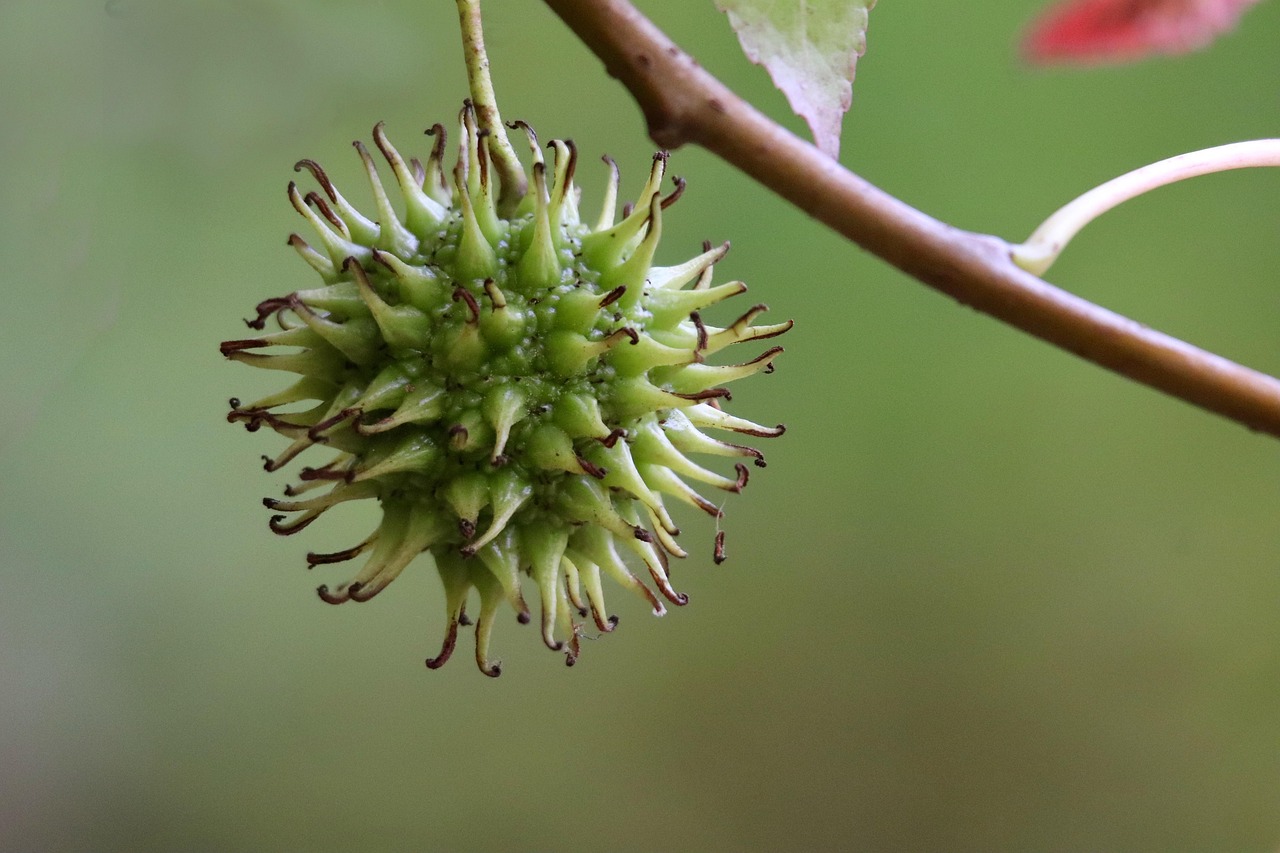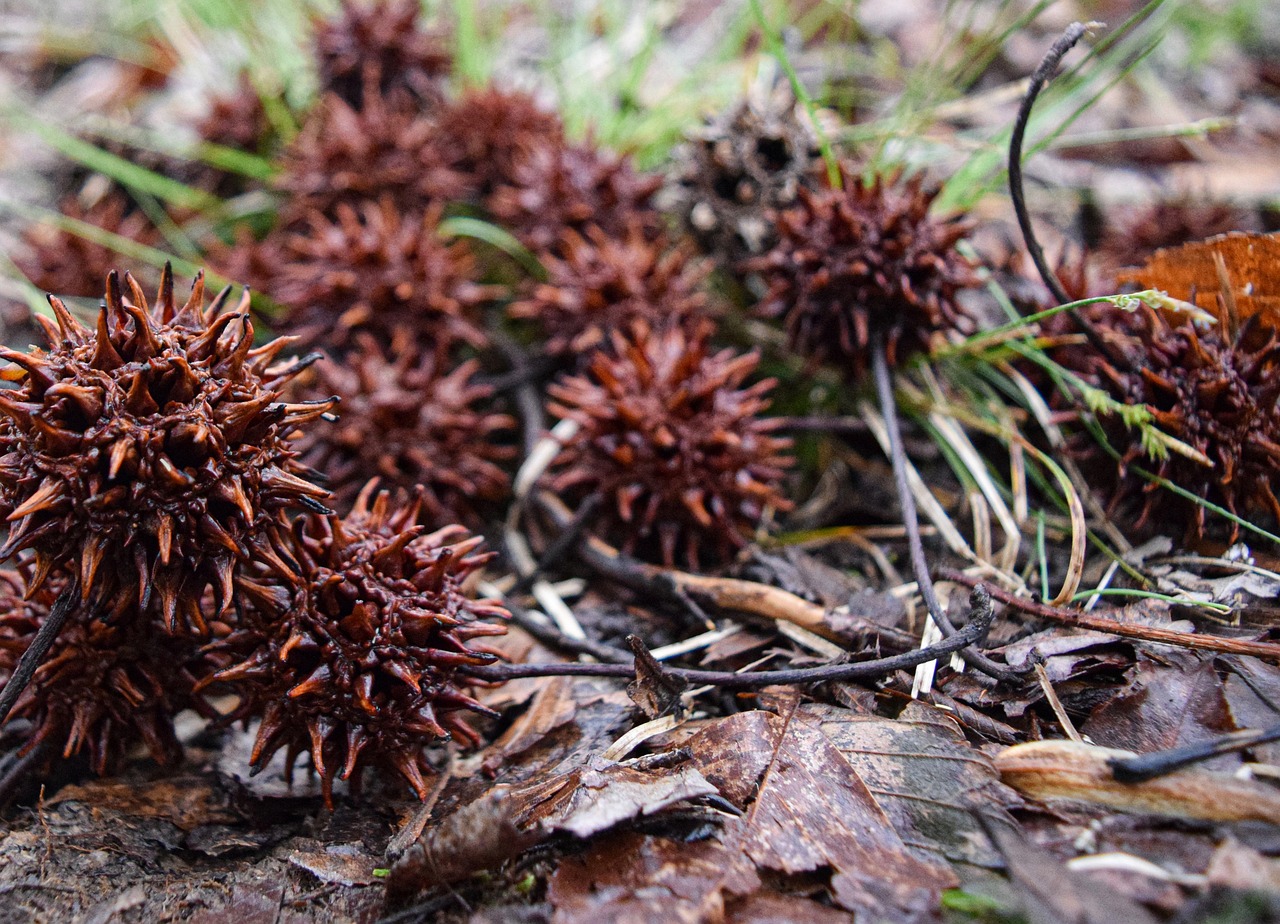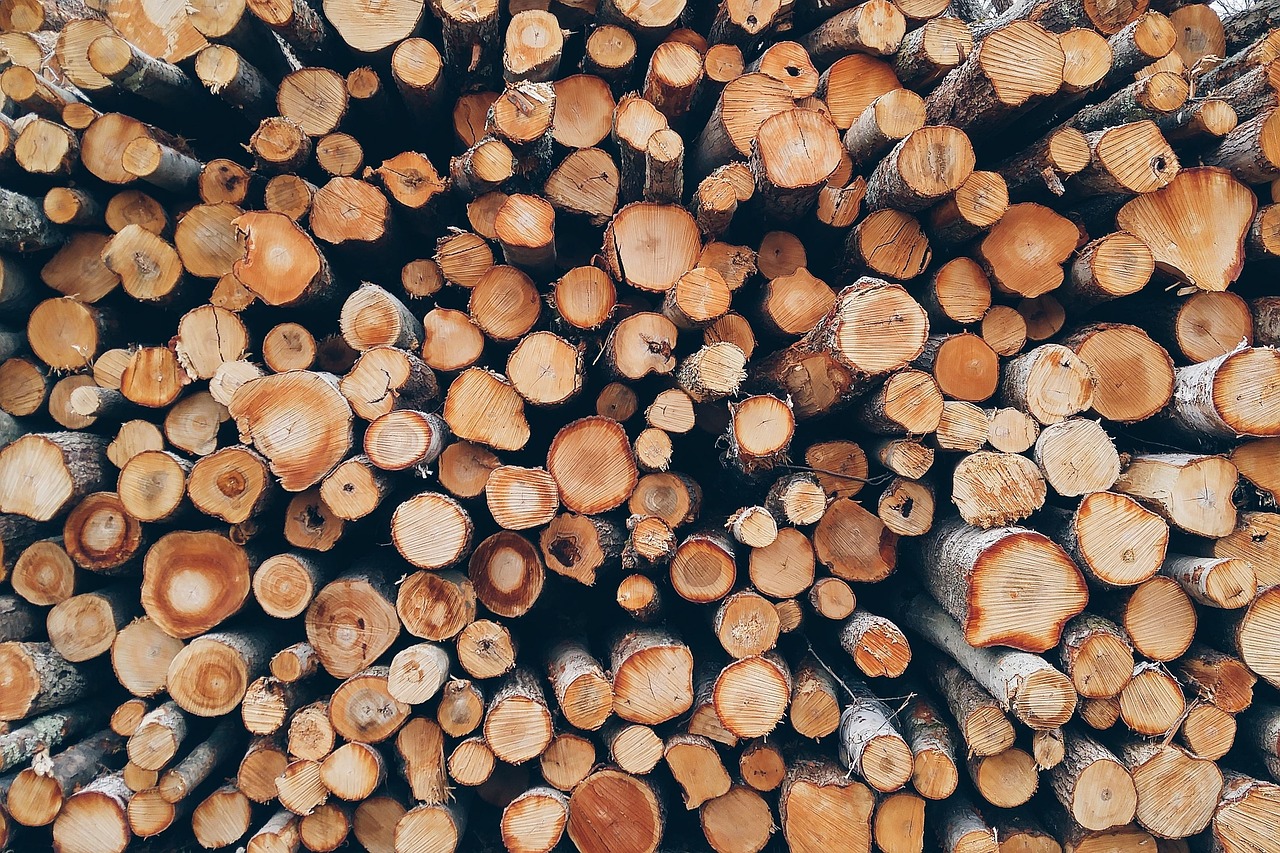Sweetgum firewood is not the most popular choice for burning, but it can be used effectively if properly seasoned. It tends to burn hot and produces a decent amount of heat. However, it also generates significant smoke and creosote, which can be a concern for chimneys.
Understanding Sweetgum Wood

Sweetgum, scientifically known as Liquidambar styraciflua, is a deciduous tree native to the southeastern United States. It is recognized for its distinctive star-shaped leaves and spiky seed pods. The wood is often used in furniture making and cabinetry due to its attractive grain and color. When it comes to firewood, however, sweetgum has mixed reviews.
One of the characteristics of sweetgum firewood is its density. It is considered a hardwood, meaning it generally burns longer and hotter than softwoods like pine. However, this density also leads to some challenges when burning sweetgum in fireplaces or wood stoves.
Properties of Sweetgum Firewood
When evaluating sweetgum firewood, several properties come into play. These include its heat output, burn rate, smoke production, and seasoning requirements. Understanding these factors can help you determine if sweetgum is suitable for your firewood needs.
| Property | Description |
|---|---|
| Heat Output | Moderate to high, can provide good heat when properly seasoned. |
| Burn Rate | Burns relatively quickly compared to other hardwoods. |
| Smoke Production | Produces a significant amount of smoke and can lead to creosote buildup. |
| Seasoning Time | Requires at least six months to one year for optimal burning. |
Advantages of Sweetgum Firewood
While sweetgum firewood may not be the top choice for everyone, it does have some advantages worth considering:
- Availability: Sweetgum trees are widespread in many regions, making the wood readily available.
- Cost-Effective: Often less expensive than other hardwoods, sweetgum can be a budget-friendly option for firewood.
- Decent Heat Output: When properly seasoned, it can produce a good amount of heat, suitable for home heating needs.
Challenges of Burning Sweetgum Firewood
Despite its advantages, there are some challenges associated with burning sweetgum firewood:
- High Smoke Production: Sweetgum tends to produce more smoke than other types of firewood, which can create issues in enclosed spaces.
- Creosote Buildup: The smoke contains oils that can lead to creosote accumulation in chimneys, increasing the risk of chimney fires.
- Long Seasoning Time: It requires a longer seasoning time compared to some other hardwoods, which may not be convenient for everyone.
Understanding these factors will help you make an informed decision when choosing sweetgum firewood for your fireplace or wood stove. The key to enjoying a good burning experience lies in proper seasoning and management of your firewood supply.
Seasoning Sweetgum Firewood
Proper seasoning is crucial for burning sweetgum firewood effectively. Seasoning refers to the process of drying the wood to reduce its moisture content, which enhances its burning efficiency. Freshly cut sweetgum wood can have a moisture content of over 50%, making it difficult to ignite and leading to excessive smoke production.
Why Seasoning Matters
The importance of seasoning cannot be overstated. Here are some reasons why it is essential:
- Improved Combustion: Well-seasoned firewood ignites more easily and burns hotter, providing better heat output.
- Reduced Smoke: Lower moisture content decreases smoke production, making for a cleaner burning experience.
- Minimized Creosote Buildup: Seasoned wood generates less creosote, reducing the risk of chimney fires.
How to Season Sweetgum Firewood
To effectively season sweetgum firewood, follow these steps:
- Cut the Wood: Cut the wood into manageable lengths, typically 16 to 18 inches for fireplaces. This size allows for optimal airflow and faster drying.
- Split the Logs: Splitting the wood increases surface area, promoting quicker drying. Smaller pieces will season faster than larger ones.
- Store in a Dry Location: Stack the wood in a well-ventilated area, preferably off the ground to avoid moisture absorption from the soil. Cover the top with a tarp but leave the sides open for airflow.
- Monitor Moisture Levels: Use a moisture meter to check the wood’s moisture content. Aim for a level below 20% for optimal burning.
Best Practices for Burning Sweetgum Firewood
To get the most out of sweetgum firewood, certain best practices can enhance your burning experience. These practices focus on maintaining a clean burn and ensuring safety in your home.
Building a Good Fire
When building a fire with sweetgum wood, consider these tips:
- Use Kindling: Start your fire with dry kindling or small twigs. This will help ignite the larger logs more easily.
- Add Gradually: Once the kindling is burning well, add larger pieces of seasoned sweetgum wood gradually. This method helps maintain a steady burn.
- Avoid Overloading: Do not overload your fireplace or stove. A smaller fire is easier to manage and reduces smoke output.
Maintaining Your Fireplace or Wood Stove
Regular maintenance of your fireplace or wood stove is essential when burning sweetgum firewood:
- Chimney Inspection: Have your chimney inspected and cleaned at least once a year to prevent creosote buildup and ensure safe operation.
- Check Airflow: Ensure that your fireplace or stove has proper airflow. Good ventilation will enhance combustion and reduce smoke.
- Use a Fire Screen: Use a fire screen or glass doors to contain sparks and improve safety while enjoying your fire.
Environmental Considerations

Burning firewood, including sweetgum, has environmental impacts worth considering. Here are some factors to keep in mind:

Sustainability of Sweetgum Trees
Sweetgum trees are abundant in many regions, making them a sustainable choice for firewood if sourced responsibly. However, it’s crucial to consider the following:
- Local Regulations: Check local regulations regarding cutting down trees. Many areas have restrictions to protect forests and wildlife.
- Sustainable Practices: If possible, obtain firewood from fallen or dead trees rather than cutting live trees. This practice helps maintain healthy ecosystems.
Air Quality Concerns
The burning of any wood produces smoke and particulates that can affect air quality. To minimize these effects:
- Burn Only Seasoned Wood: Always use seasoned wood to reduce smoke and particulate matter.
- Avoid Burning Trash: Never burn trash or treated wood, as these can release harmful chemicals into the air.
Being mindful of these environmental considerations ensures that your use of sweetgum firewood is as responsible as it is enjoyable.
Comparing Sweetgum Firewood to Other Firewood Options
When considering sweetgum firewood, it’s beneficial to compare it to other common firewood types. This comparison can help you understand its strengths and weaknesses relative to other options available for burning.
Popular Hardwoods
Hardwoods are generally preferred for heating due to their density and heat output. Here are some popular hardwoods often compared with sweetgum:
| Firewood Type | Heat Output (BTU) | Seasoning Time | Smoke Production |
|---|---|---|---|
| Sweetgum | 20 million BTU/cord | 6-12 months | High |
| Oak | 24 million BTU/cord | 12-24 months | Low |
| Maple | 22 million BTU/cord | 6-12 months | Moderate |
| Hickory | 27 million BTU/cord | 12 months | Low |
As seen in the table, sweetgum firewood offers a moderate heat output compared to other hardwoods. However, it requires careful management due to its higher smoke production.
Softwoods Versus Hardwoods
Softwoods, such as pine and fir, also provide a different burning experience. Here’s how sweetgum compares with softwoods:
- Heat Output: Softwoods generally burn hotter initially but do not produce as much sustained heat as hardwoods like sweetgum.
- Burn Time: Sweetgum tends to burn longer than many softwoods, which can lead to a more consistent heat output over time.
- Smoke and Creosote: Softwoods often produce less smoke than sweetgum, but they can lead to faster creosote buildup due to their high resin content.
Storage and Handling of Sweetgum Firewood
<
p>Proper storage and handling of sweetgum firewood are essential to maintain its quality and ensure safe burning. Here are some best practices:
Storage Tips
To optimize the storage of your sweetgum firewood:
- Store Off the Ground: Use pallets or logs to elevate the wood off the ground. This prevents moisture from the soil affecting the wood.
- Cover the Top: Cover the tops of your wood piles with a tarp or metal roof to protect against rain. Ensure the sides remain open for airflow.
- Organize by Seasoning: Stack your firewood by its seasoning status. This practice allows you to use the oldest wood first.
Handling Firewood Safely
When handling sweetgum firewood, safety should be a priority:
- Wear Gloves: Protect your hands from splinters and rough edges when handling logs.
- Use Proper Tools: Use appropriate tools for splitting and cutting wood. An axe or a log splitter can be helpful.
- <strong
Preventing Firewood Pests
When storing sweetgum firewood, it’s also important to consider pest control. Insects can infest firewood, leading to damage and potential spread to your home. Here are some tips for preventing pests:
- Inspect Before Stacking: Check logs for signs of insect activity, such as holes or frass (wood dust). Do not stack infested wood.
- Avoid Stacking Near Home: Store firewood at least 20 feet away from your home to minimize the risk of pests entering your living space.
- Use a Wood Rack: A wood rack helps keep firewood elevated and allows for better airflow, which deters pests.
Firewood Alternatives
While sweetgum can be a viable option for firewood, considering alternatives may enhance your burning experience. Here are a few other types of firewood you might explore:
- Pine: Burns quickly and is great for kindling but produces more smoke and less heat than hardwoods.
- Birch: Easy to split, burns well even when not fully seasoned, and has a pleasant aroma.
- Cherry: Offers a sweet smell when burned and provides good heat, making it a popular choice among wood-burning enthusiasts.
Each type of firewood has its own set of characteristics and benefits, so consider your specific needs when choosing the best option for your fireplace or wood stove.
Final Thoughts
Sweetgum firewood can be a suitable choice for those looking for an economical heating solution. Its availability and moderate heat output make it an attractive option, especially in areas where sweetgum trees are abundant. However, it is essential to properly season the wood to maximize its burning efficiency and minimize smoke production.
The challenges associated with sweetgum, such as high smoke output and longer seasoning time, should not be overlooked. By following best practices for storage, handling, and maintenance, you can enjoy the benefits of burning sweetgum while mitigating potential drawbacks.
Ultimately, the decision to use sweetgum firewood should be based on personal preferences, availability, and your specific burning requirements. Whether you choose sweetgum or another type of firewood, being informed and prepared will enhance your wood-burning experience.
As you explore your options, remember that every type of firewood has its unique qualities. With the right approach to sourcing and managing your firewood supply, you can enjoy warm, cozy fires throughout the season.
